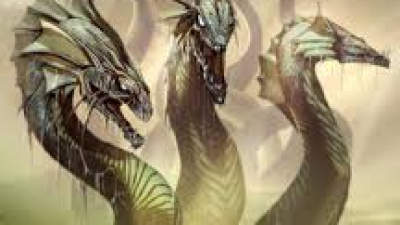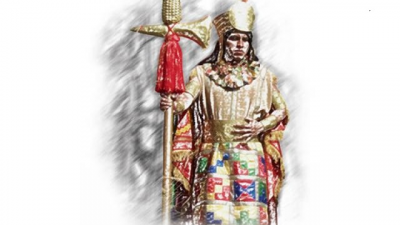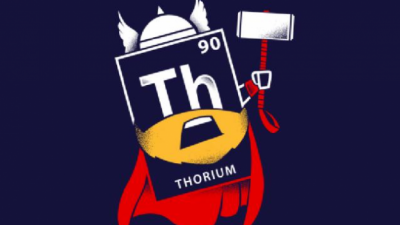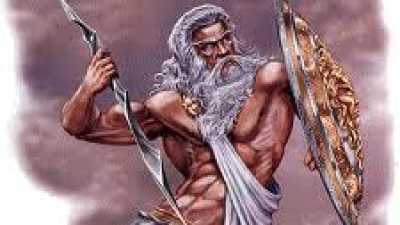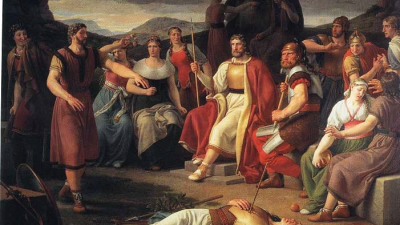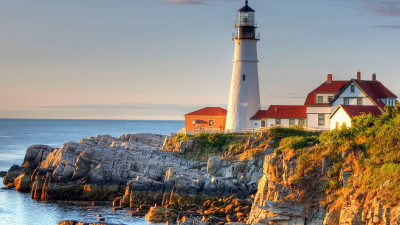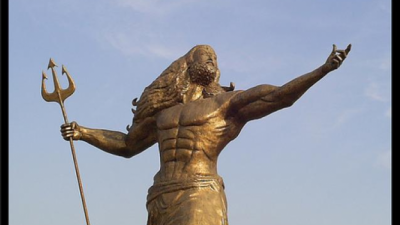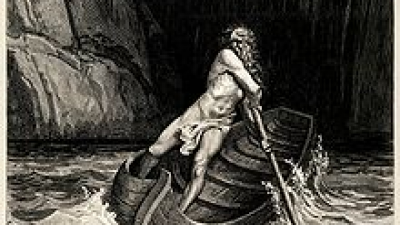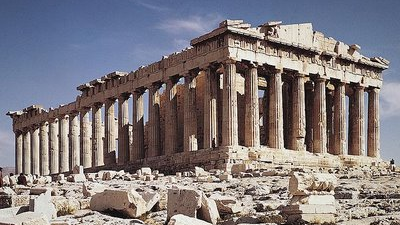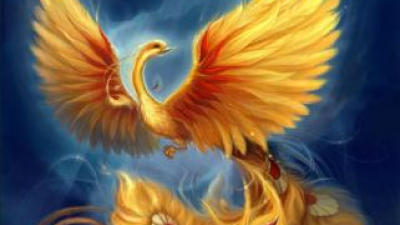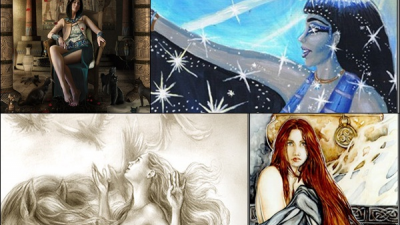Greek gods
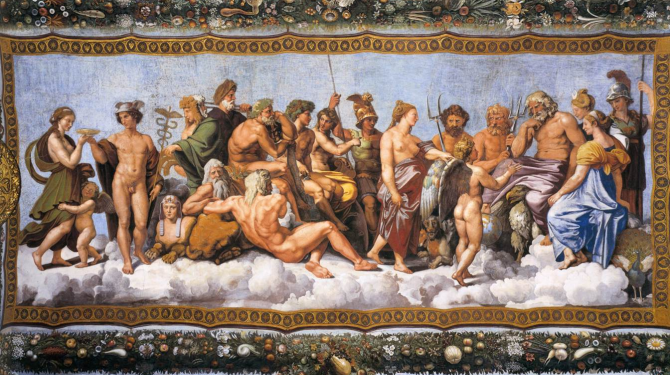
Source: listas.20minutos.es
TOP 65:
Oizís, daimónide goddess of anguish
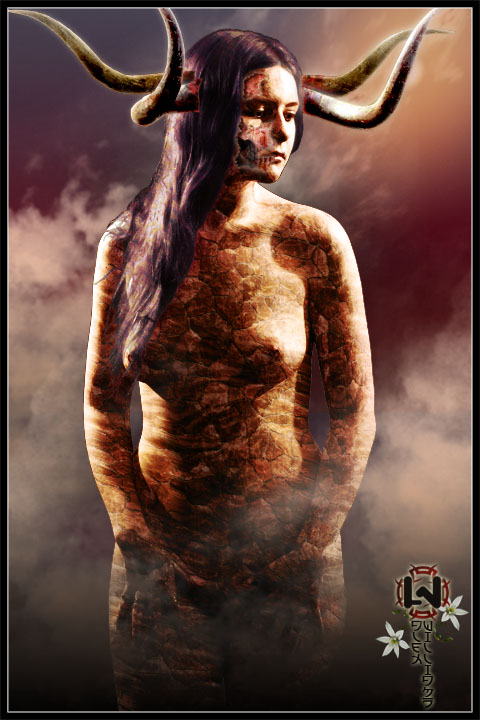
In Greek mythology, Oizís was a daimon or spirit that personified anguish, misery and sadness. According to Hesiod, she was the daughter of Nix by herself, while Higinio attributed the paternity of Erebo. Oizís is one of the descendants of the Night that represent the evils of the world, being sister, for example, of Thanatos, Geras, Eris or Apate. It is equated in Roman mythology to Misery and Tristitia.
TOP 64:
The melodies
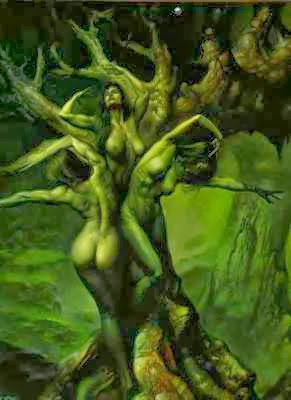
In Greek mythology, melias or melias were the nymphs of ash trees. The ash that occurs in the mountains of Greece is the flower ash. These dryads were begotten by Gea when fertilized by the genitals of Uranus thrown by Cronus. They are sisters of the Furies, the Giants and Aphrodite. The most important of the melodies is Melia. The race of the Bronze Age emerged from the ash trees of the melodies.
TOP 63:
The ourea, the mountains
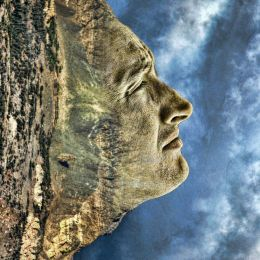
In Greek mythology, the Ourea (in ancient Greek Oὔρεα, from οὔρος oúros or ὄρος óros, 'mountain') were the primordial gods (protogonos) or rustic demons of the mountains. Rarely mentioned, they were descendants of Gea (the Earth) without a father, and therefore brothers of Uranus (Heaven) and Ponto (the Sea). Among the Ourea are considered: Athos, a mountain of Thrace (northern Greece) Citerón, mountainous massif of Boeotia (central Greece) Etna, the volcano of Sicily Helicon, a mountain of Boeotia that competed with Citeron Nisa, a mountain of Boeotia who raised Dionysus Olympus, the home of the Olympic gods and the highest mountain in Greece, located in Phrygia Oreo, god of the Othrys mountain, in Malis (southern Thessaly) Parnes, a mountain of Boeotia Tmolo, a mountain of Lydia (in Anatolia)
TOP 62:
The Giants
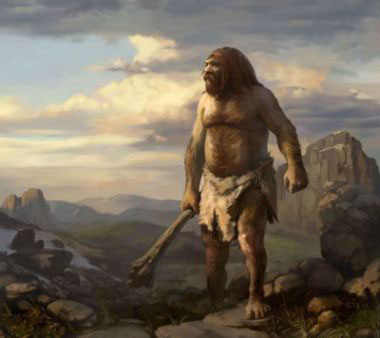
Greek mythology already spoke of the Hyperboreans, giants who lived beyond the north winds and within their myths we find great references to giants, including the Titans, including Prometheus, who gave fire to men. The cyclops of Homer's Odyssey were also giant, of which the most famous was Polyphemus, who captured the men commanded by Odysseus in order to devour them. Polyphemus is defeated by the intelligence of the Greek, in an unequal confrontation.
TOP 61:
Oneiro, the dream
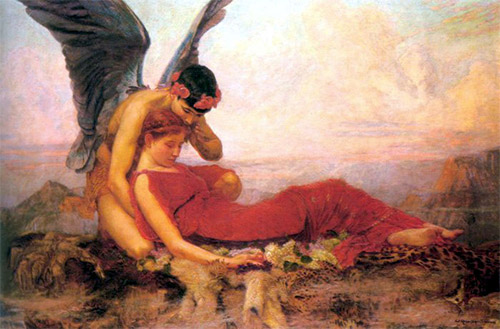
In Greek mythology, the Oniros (in Greek Ὄνειροι Oneiroi, 'dreams') were the thousand personifications of dreams. Hesiod1 considers them children of Nix (the Night) without male intervention, although certain authors consider Érebo (the Darkness) their father. Euripides considered them sons of Gea (the Earth) and conceived them as black-winged demons. Ovid, who considers them children of Hipnos (the Dream), mentions three by their names: Morpheus (the most famous and considered by some his boss), Iquelo or Fobetor and Fantaso:
TOP 60:
The furies
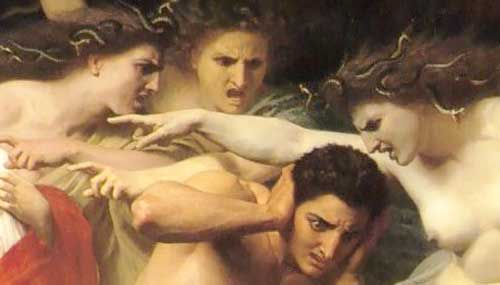
Alecto (Άληκτώ, 'the relentless'), which punishes moral crimes. Megera (Μεγαιρα, 'la jealous'), which punishes infidelity crimes. Tisífone (Τισιφονη, 'the avenger of murder'), which punishes blood crimes. In Greek mythology, the Erinias (in ancient Greek Έρινύες Erinúes, of unknown etymology) were female personifications of revenge that persecuted those guilty of certain crimes. They were also called Euménides (in ancient Greek Εύμενίδες, 'benevolent'), antiphrasis used to avoid his anger when his real name was pronounced. According to tradition, this name would have been used for the first time after the acquittal of Orestes by the Areopagus (described below), and was later used to refer to the benign side of the Erinias. In Athens, the σεμναί θεαί semnai theai, 'venerable goddesses' periphrasis was also used euphemistically. They were also referred to as χθόνιαι θεαί chthóniai theaí, 'chthonic goddesses', and the Praxídiceas epithet (Πραξιδικαι), 'law enforcers', was applied to them. In Roman mythology they are known as Furias (in Latin Furiæ or Diræ, 'terrible').
TOP 59:
Jápeto, titan god ancestor of humanity
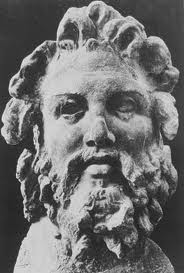
In Greek mythology, Jápeto (in ancient Greek Ίαπετός Iapetós), was a titan son of Uranus and Gea. He was the father of Atlas, Prometheus (through whom he would be the ancestor of the human race), Epimetheus and Menecio, whom Zeus would defeat in the Titanomaquia. Their descendants are often called by the Japétida or Japetónidas patronymic forms.
TOP 58:
Kid, titan god of the flocks
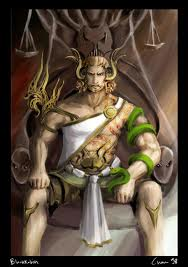
In Greek mythology, Crío (in ancient Greek Κρεῖος or Κρίος) was one of the Titans on the list given by Hesiod in his Theogony, a son of Uranus and Gea. The least individualized of them, was overthrown in the Titanomaquia. ML West has suggested how Hesiod filled in the complement of the Titans from the central group: adding three figures from the archaic tradition of Delphi, Ceo, Febe (whose name assumed Apollo with the oracle) and Themis. Among other possible interpolations of Titans was Crío, whose interest for Hesiod was as the father of Perses and grandfather of Hecate, of whom Hesiod was, according to West, an "enthusiastic evangelist."
TOP 57:
Filotes, daimónide goddess of affection
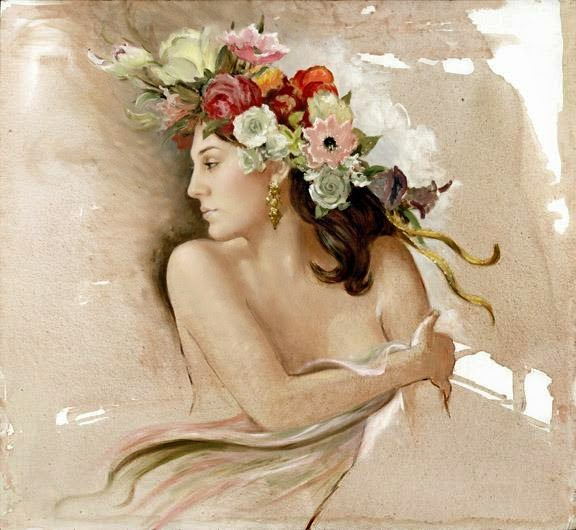
In Greek mythology Filotes was a daimon that personified friendship and affection, being also the physical, sex. She was the daughter of the Night, by herself or had with Ether. Opposites to Filotes were the Neikea, the daimones of the disputes.
TOP 56:
The cyclops
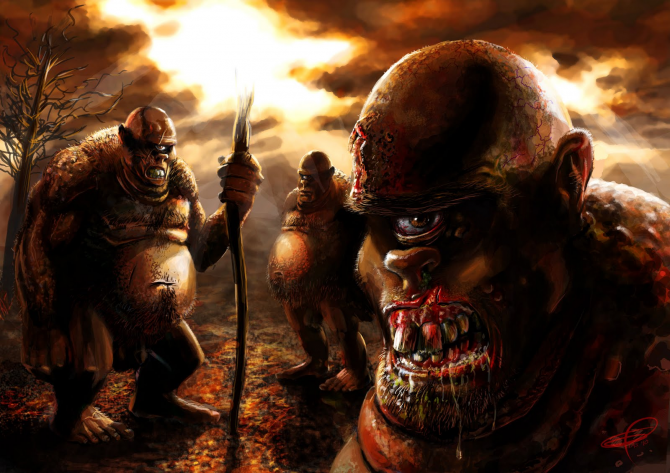
In Greek mythology, the Cyclops (in Greek Κύκλωψ Kýklops, plural Κύκλωπες Kýklopes, which comes from κύκλος kyklos, 'wheel', 'circle' and ὤψ ops, 'eye') were the members of a race of giants with one eye in the middle of the forehead. There were two generations of Cyclops.
TOP 55:
Tea, titanic goddess of vision
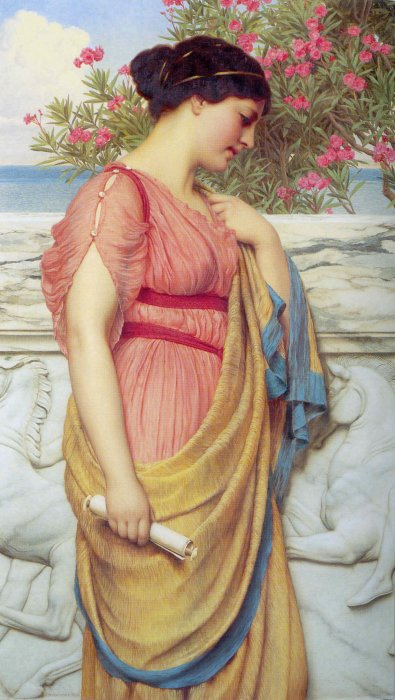
In Greek mythology, Tea, Tía or Teia (in Greek Θεια, also written Thea, Thia or Theia), also called Eurifaesa (Ευρυφαεσσα Euryphaessa, 'of broad brightness'), was the Titan of sight and by extension the goddess who It endowed gold, silver and gems with their luster and intrinsic value. Tea married his brother Hyperion, god of the watchful sun, with whom he was the mother of Helios (who is said in his Homeric hymn who was the son of Eurifaesa), Selene and Eos, the sun, the moon and the dawn. The ancient Greeks believed that sight was a ray emitted by the eyes similar to those of the sun and the moon, so it was logical that the goddess of sight was also the mother of the gods of these celestial bodies. After the Titanomaquia, in which the Titanides had remained neutral, he went to live in the palace of his son Helios.
TOP 54:
Mnemósine, titanic goddess of memory
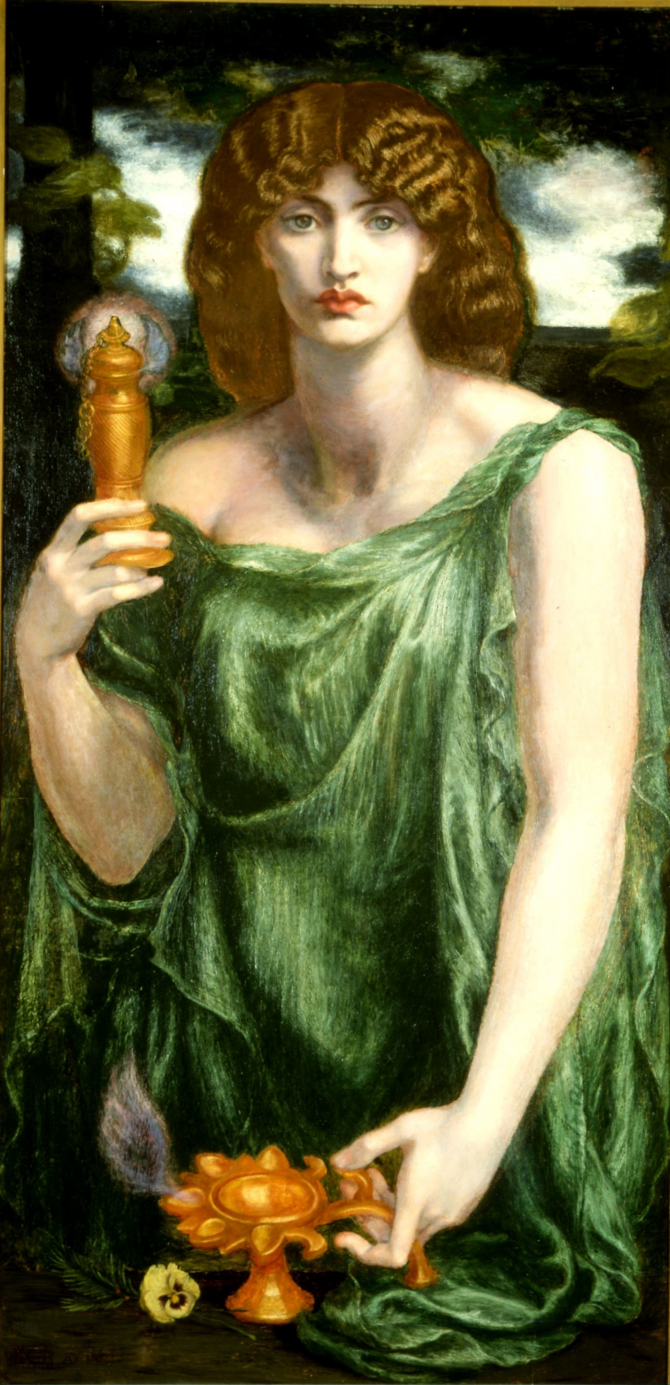
In Greek mythology, Mnemósine or Mnemosina (in ancient Greek Μνημοσύνη Mnēmosýnē, of μνήμη mnếmē, 'memory'), often confused with Mneme, was the personification of memory. This Titan was the daughter of Gea and Uranus, and the mother of the Muses with Zeus.
TOP 53:
Hemera, the day
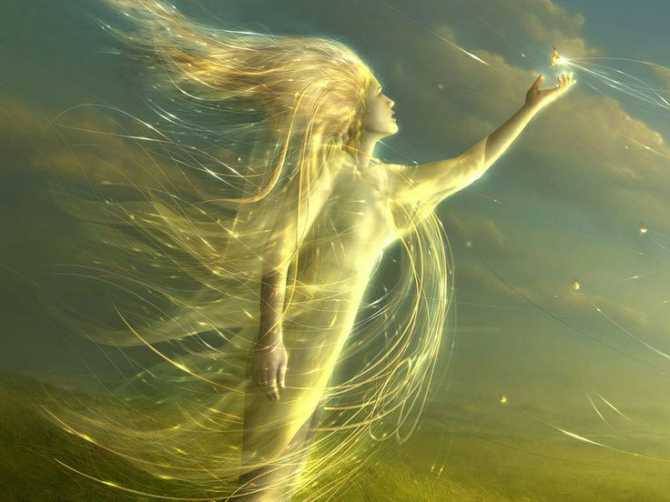
In Greek mythology, Hemera (in ancient Greek Ἡμέρα Hêméra, 'day') was a primordial goddess (Protogonos) and the feminine personification of the day. It was also called Amar (Αμαρ, 'day'). The Romans gave him the name of Dies. According to Hesiod, she was the daughter of Érebo (the Darkness) and Nyx (the Night). Cicero thinks that Dies must logically be a god, if Uranus is. The poet Baquílides states that his parents were Nyx and Chronos, but Higino mentions in his preface to the Fables that arose from Chaos and that Nyx was his sister.
TOP 52:
Tartar, the abyss
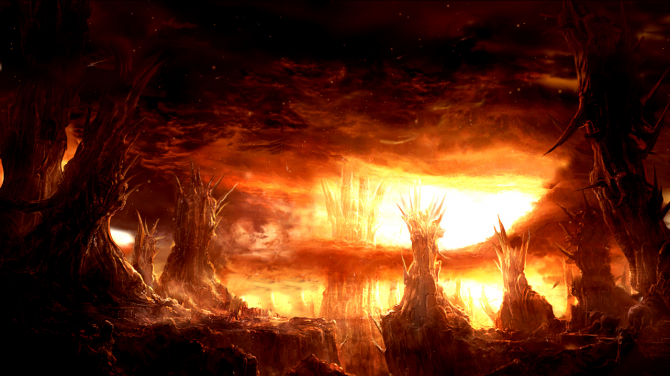
According to Greek mythology, Tartarus (from Latin Tartărus and this one from ancient Greek Greek: Τάρτᾰρος, Τάρταρος, romanization: Tartars, Tartars, pronunciation: classical: Tartars, Koiné: Tˈartaro̞s, Byzantine: Tartars) is a deep chasm used as a dungeon of suffering and a prison for the Titans. He was under the underworld, as deep to this as Gea (land) and Ponto (sea) were to Uranus (sky). According to Phaedo (c. 400 BC) of Plato, it was the place where souls were judged after death and where the wicked were punished. Tartarus is a primary entity just like Gea and Cronos (time).
TOP 51:
Ponto, the sea
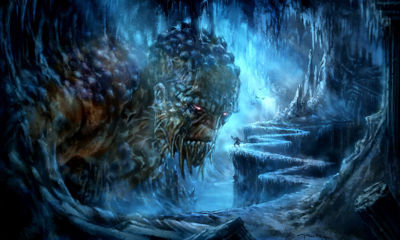
In Greek mythology, Ponto (in ancient Greek Πόντος Póntos, 'sea'; in Latin Pontus) was an ancient pre-Olympic sea god, son of Gea, Earth, and brother of Uranus. Hesiod tells that Gea fathered Ponto by herself, without matching. To him, Ponto seems little more than a personification of the sea. Higino claimed that he was the son of Gea with Ether, the Air.
TOP 50:
The hecatonchires
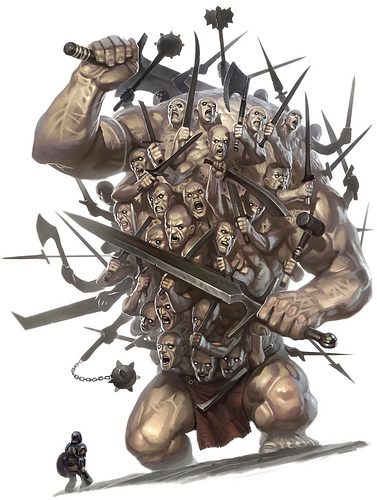
In Greek mythology the Hecatonchires or Hecatonkers (in Greek, Έκατόνχειρες Hekatonkheires or Έκατόνταχειρας Hekatontakheiras: 'the one with one hundred hands'), also known as Centimanos (from Latin Centimani), were giant with 100 sons and 50 heads and 50 heads . His father threw them into Tartarus, but they were rescued by Cronos, whom they helped to castrate and overthrow Uranus. After helping Cronos he locked them back in Tartarus, where they remained guarded by Campe until Zeus rescued them. During the War of the Titans, they threw rocks one hundred at a time at the Titans.
TOP 49:
Momo, god daimón of guilt
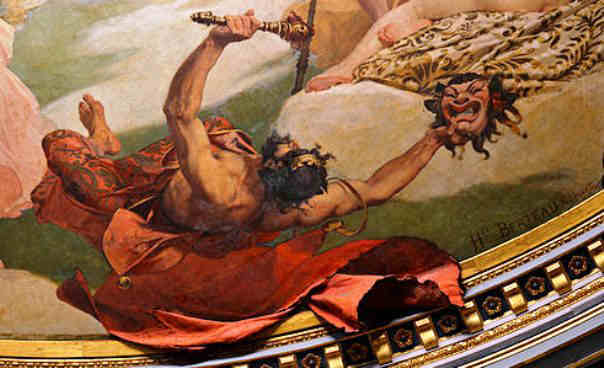
Momo (in ancient Greek Μωμος Mômos, 'mockery', 'fault'; in Latin Momus) was, in Greek mythology, the personification of sarcasm, teasing and ironic acuity. He was the god of writers and poets, a spirit of malicious indictment and unfair criticism.
TOP 48:
Apate, daimónide goddess of deception

In Greek mythology Apate was one of the daimones, which personified deception, fraud or fraud. He was, along with his corresponding male Dolos (the daimon of the tricks and bad arts), one of the spirits that came out of Pandora's box. Both were sons of Erebo and Nix, or of Nix for herself, and used to be accompanied by pseudologists (lies). That is why they had the opposite daemon of Aleteia, the truth. Its Roman equivalent was Fraus.
TOP 47:
Himero, god erote of sexual desire
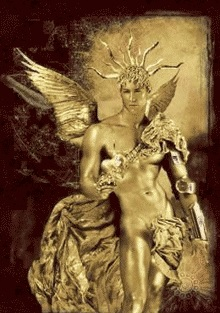
In Greek mythology, Himerus (in ancient Greek Ίμερος Himeros, 'desire') was the personification of lust and sexual desire. He appears in Hesiod's Theogony as a companion, along with Eros, of Aphrodite.1 He was represented as a winged young man, just like the rest of the Erotes, and often accompanied by Eros and Poto, gods of love and longing.
TOP 46:
Typhoon, titan god of storms
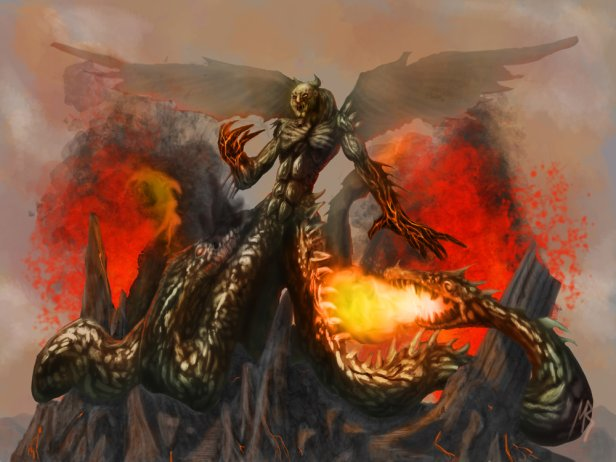
In Greek mythology, Typhoon, Tifeo, Tifoeo or Typhoon (in ancient Greek Τυφών Typhôn, Τυφάων Typhaôn, Τυφωεύς Typhôeus or Τυφώς Typhôs, from τῦφος typhos, 'smoke'; in Latin Typhon) is a primitive divinity related to. He was the last son of Gea, this time with Tartarus, the cavernous lower void:
TOP 45:
Uranus, the sky
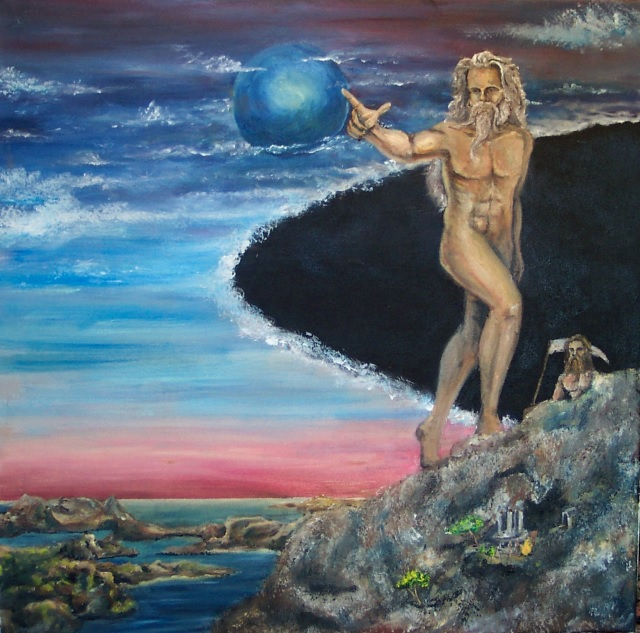
In Greek mythology, Uranus (in ancient Greek, Οὐρανός, Ouranos, which means 'heaven', 'firmament'; Latinized, Uranus) is a primordial god personifying heaven. Its equivalent in Roman mythology was Caelus. In the Greek, Uranus was the son and husband of Gea, Mother Earth, who, according to Hesiod in Theogony, had conceived of Uranus herself. Uranus and Gea were the parents of the first generation of the Titans, as well as the ancestors of most of the Greek gods; however, no specific cult of Uranus survived in the classical era. God does not appear among the usual motifs of the ancient Greek pottery illustrations. Yet, Gea, Uranus and Styx could be gathered in solemn invocations in the Homeric epic.
TOP 44:
Ether, energy
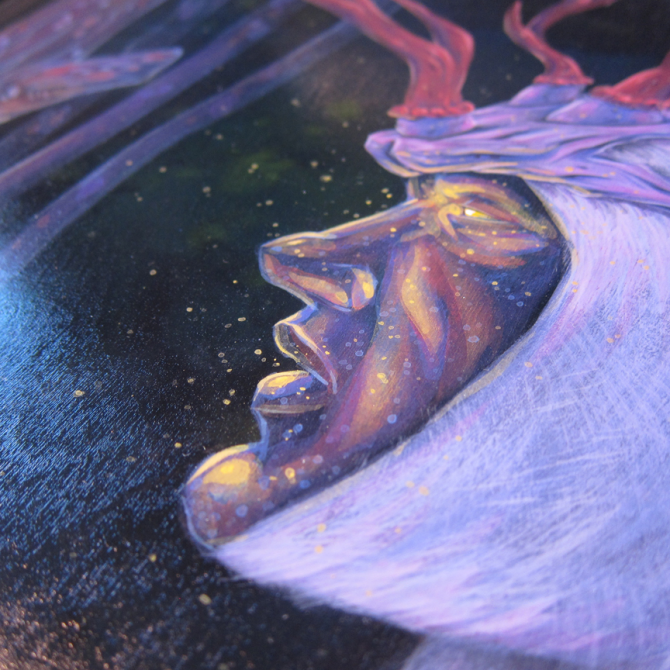
In Greek mythology, Ether (ancient Greek: Αἰθήρ, Romanization: Aithḗr, pronunciation: a͜ɪtʰɛː́r (classical), ɛːtʰˈeːr (koiné), eθˈir (Byzantine)) is an element, purer and brighter than air, and at the same time region that this element occupies. It is also the personification of that element.
TOP 43:
Moro, destiny
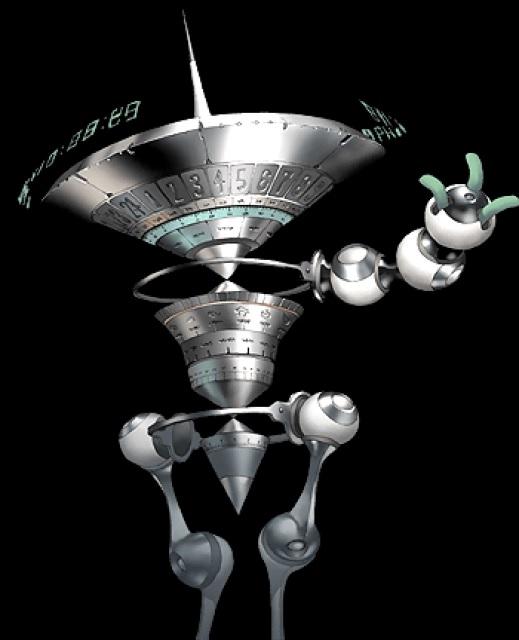
In Greek mythology, Moro or Moros (in ancient Greek Μορος, 'destiny', 'dissolution'; in Latin Letum) was the masculine personification of fate, fate and impending doom. He was the son of Nix and (according to Higinio) of Érebo. Like his mother, Moors was invisible and dark. He was one of the so-called "dark gods" along with his brothers Thanatos (Death), the Keres, Hipnos (Dream) and the Oniros (the tribe of dreams). It is said that all other gods were subject to Moors, and that it was the only power Zeus had to submit to, the most powerful of them. Their laws were written in a place where the gods could go to consult them. Its ministers were the three Moiras, feminine personifications of destiny. To break up with him, Chaos was reintroduced into the world. In Roman mythology it is Sors.
TOP 42:
Febe, titanic goddess of intellect
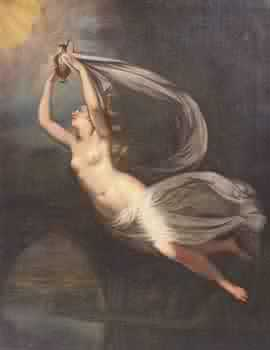
In Greek mythology, Febe (in ancient Greek Φοίβη - Phoebē: 'glow' of the intellect), that of the golden crown, was one of the original Titanids, the giant sons of Uranus and Gea. Febe went to Ceo's bed and conceived Leto and Asteria from him. He received control of the oracle of Delphi from Themis, according to a few sources, and later he would give it to Apollo. His name was also applied as an epithet to Artemis in his role as goddess of the moon, which was considered feminine.
TOP 41:
Dionysus, the Olympic god of wine
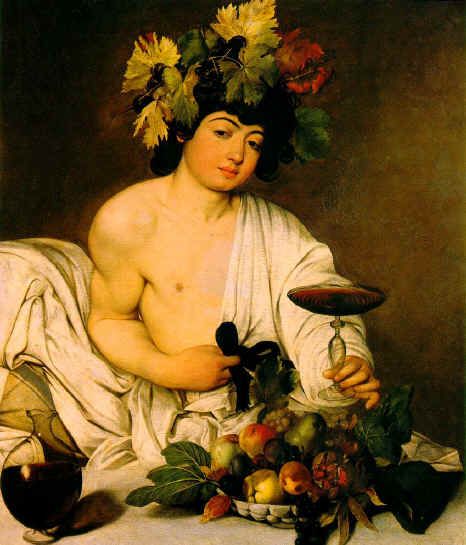
In classical mythology, Dionysus (in ancient Greek Διώνυσος Diônysos or Διόνυσος) is the god of vintage and wine, inspiring of ritual madness and ecstasy, and an important character of Greek mythology. Although the geographical origins of his cult are unknown, almost all tragedies present him as a "foreigner."
TOP 40:
Anteros, god erote of unrequited love
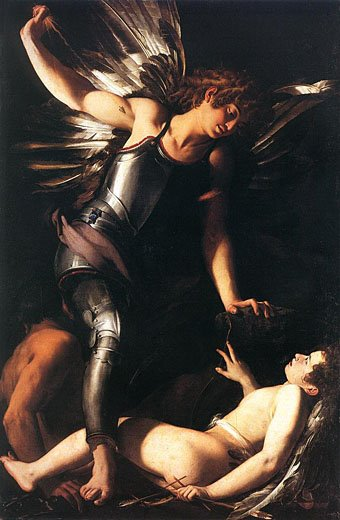
In Greek mythology Anteros (in Greek Αντερως) is the personification of the corresponding love, avenger of the unrequited love. He was the son of Ares and Aphrodite, who gave him to his brother Eros, who was alone, as a playmate. Anteros originally opposed Cupid and fought against him, a conflict that is also conceived as the rivalry between two lovers. Anteros punished those who disdained and did not correspond to the love of others, for which he is the avenger or deus ultor of Cupid.
TOP 39:
Eos, goddess of dawn
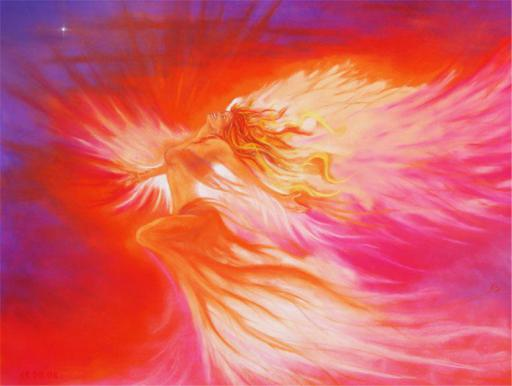
In Greek mythology Eos (in ancient Greek Ἠώς Êós or Έως Eos, 'aurora') was the titanic goddess1 of the aurora, who left her home at the edge of the ocean that surrounded the world to announce her brother Helios, the Sun. It is believed that the Greek adoration of the dawn as goddess was inherited from the Indo-European era. The name "Eos" is a cognate of the Latin Aurora and the Vedic Sanskrit Ushas.
TOP 38:
Chrono, the titan god of time
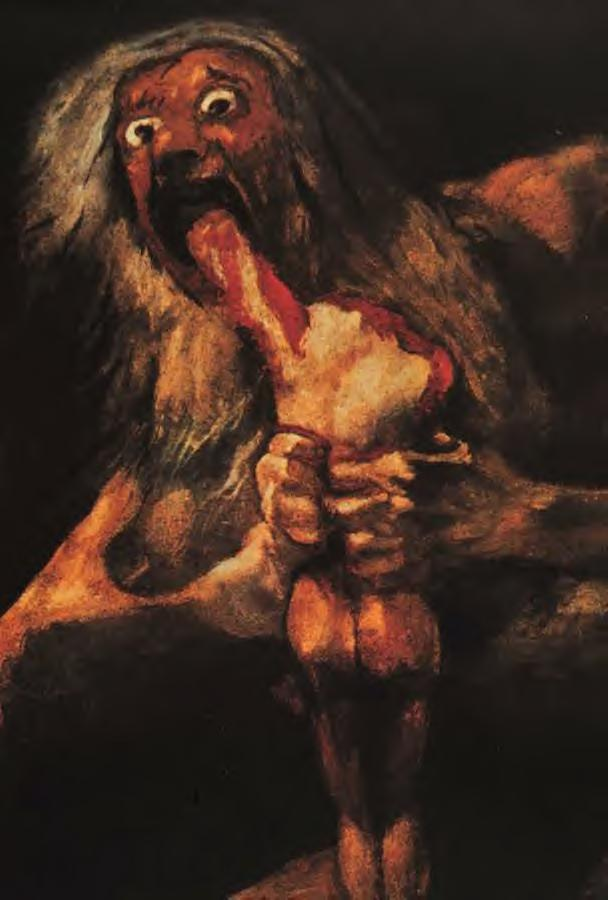
In Greek mythology, Crono or Cronos (in ancient Greek Κρόνος Krónos, in Latin Cronus) was the principal (and in some myths the youngest) of the first generation of Titans, divine descendants of Gea (the earth) and Uranus, ( heaven). Crono overthrew his father Uranus and ruled during the mythological golden age, until he was overthrown by his own children, Zeus, Hades and Poseidon, and locked in Tartarus or sent to rule the paradise of the Champs Elysées.
TOP 37:
Moiras
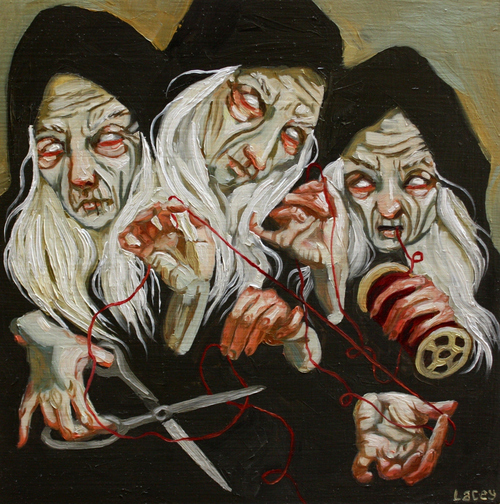
Cloto (Κλωθώ, 'spinner') spun the thread of life with a spinning wheel and a spindle. Its Roman equivalent was Nona, originally invoked in the ninth month of gestation. Láquesis (Λάχεσις, 'the one who casts lots') measured the length of the thread of life with his rod. Its Roman equivalent was Tenth, analogous to Nona. Atropos (Ἄτροπος, 'inexorable' or 'inevitable', literally 'not spinning', sometimes called Aisa) was the one who cut the thread of life. He chose the way each man died, sectioning the thread with his "detestable scissors" when the time came. Sometimes he was mistaken for Enio, one of the Grayas. Its Roman equivalent was Morta ('Death'), and the expression "the Grim Reaper" in the singular is referred to. In Greek mythology, Moiras (in ancient Greek Μοῖραι, 'distributors') were the personifications of destiny. Its equivalents in Roman mythology were the Parcas or Fata, and in the Norse the Norns. Dressed in white robes, their number ended up being set at three. The Greek word moira (μοῖρα) literally means 'part' or 'portion', and by extension the portion of one's existence or destiny. They controlled the metaphorical thread of each mortal's life from birth to death (and beyond).
TOP 36:
Echidna, goddess nymph mother of monsters
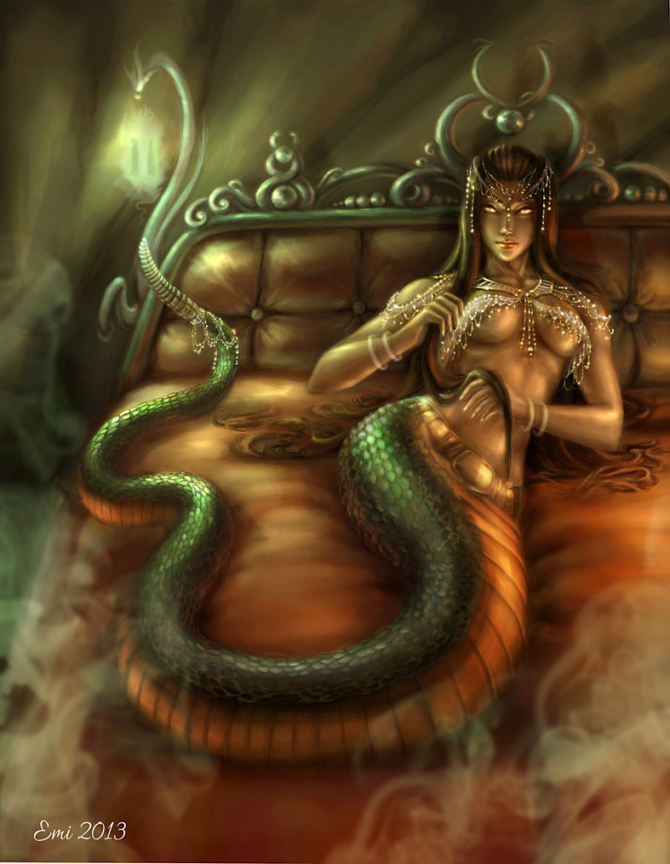
In Greek mythology, Echidna (in ancient Greek, Ἔχιδνα - Ekhidna: "viper"; in Latin, Echidna) was a monstrous nymph, considered in some literary sources descended from Forcis and Keto, and in others from Tartarus and Gea. Sometimes called Drakaina Delphyne (Δρακαινα Δελφυνη, 'dragon belly'), she is described by Hesiod in her Theogony as a female monster, mother with Typhoon of all the important monsters of Greek myths. He had the torso of a beautiful woman with fearsome dark eyes but a snake body.
TOP 35:
Hyperion, titan god of the sun
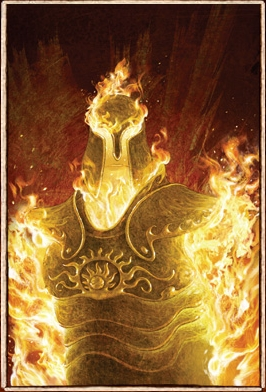
In Greek mythology, Hyperion (ancient Greek: Ὑπερίων, Romanization: Hiperíón, meaning: he who walks on high) is a Titan, son of Uranus (Heaven) and Gea (Earth). In Homer's Iliad, the sun god was called Helios Hyperion ('Sun at the top'), but in the Odyssey, the Theogony of Hesiod and the Homeric hymn to Demeter the sun is called Hyperonides ('son of Hyperion '), and certainly Hesiod imagined Hyperion as a being separated from Helios in other works. In fact, some translate "Hyperion" as 'the one that appears before the Sun'. In later Greek literature Hyperion always distinguishes itself from Helios.
TOP 34:
Hebe, goddess of youth
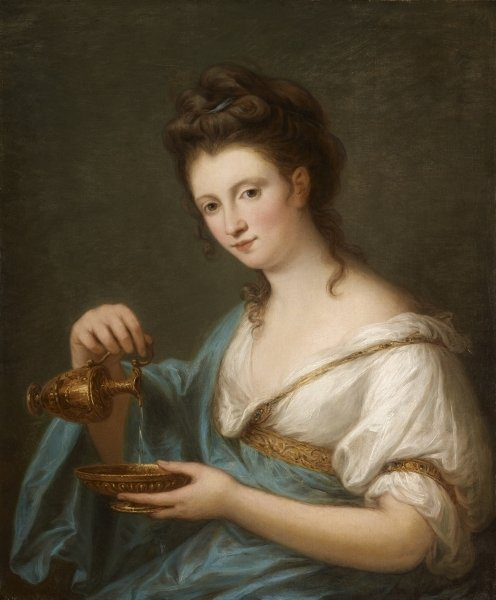
In Greek mythology, Hebe (in ancient Greek Ἥβη Hêbê) was the personification of youth, described as the daughter of Zeus and Hera. According to the Iliad, Hebe was the helper of the gods: she filled her glasses with nectar, helps Hera hook the horses to her car and bathed and dressed her brother Ares. According to the Odyssey, he married Heracles after his apotheosis, being replaced in his work by the young Trojan prince Ganymede. However, later traditions told that she had been a mother with him of two children, Alexiares and Aniceto.
TOP 33:
Eris, daimónide goddess of discord
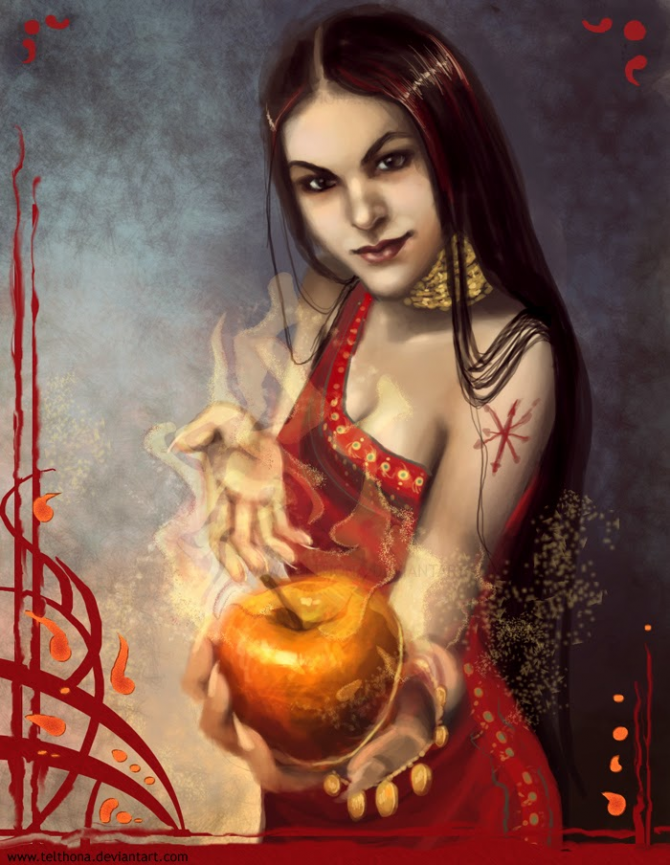
In Greek mythology Eris or Éride (in ancient Greek Ἒρις) is the goddess of discord. In Roman mythology, its equivalent is Discord. His opposite in Greek mythology was Harmony; and in the Roman, Concordia.
TOP 32:
Hestia, Olympic goddess of home
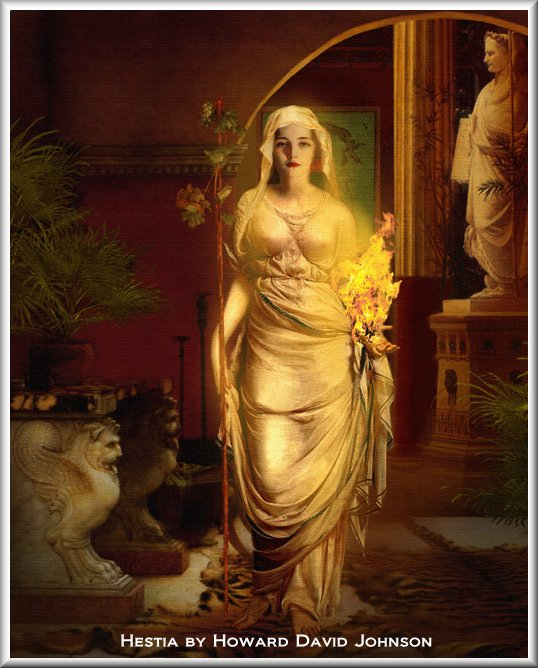
In Greek mythology, Hestia (in ancient Greek Ἑστία Hestía) is the goddess of cooking, architecture, home, or, more appropriately, of the fire that gives warmth and life to homes. She is a peaceful goddess. Its cult resembled the Scythian Tabiti, and its Roman equivalent would be the goddess Vesta, although the Roman cult to it differed quite a bit from that of the Greeks. She was the firstborn of the Titans Crono and Rea, and the first to be eaten by her father at birth; So it was the last expelled from his father's body when Zeus handed him the vomit. After the war against the Titans, Hestia was courted by Poseidon and Apollo, but swore on Zeus' head that he would always remain a virgin, thus avoiding the first dispute between the Olympic gods. The king of the gods corresponded to him, giving her the first victim of all public sacrifices and the preeminent places of all houses. Hestia was the first to whom offerings were made at banquets, even before Zeus. They used to sacrifice calves of less than a year, alluding to their virginity.
TOP 31:
Demeter, Olympic goddess of agriculture
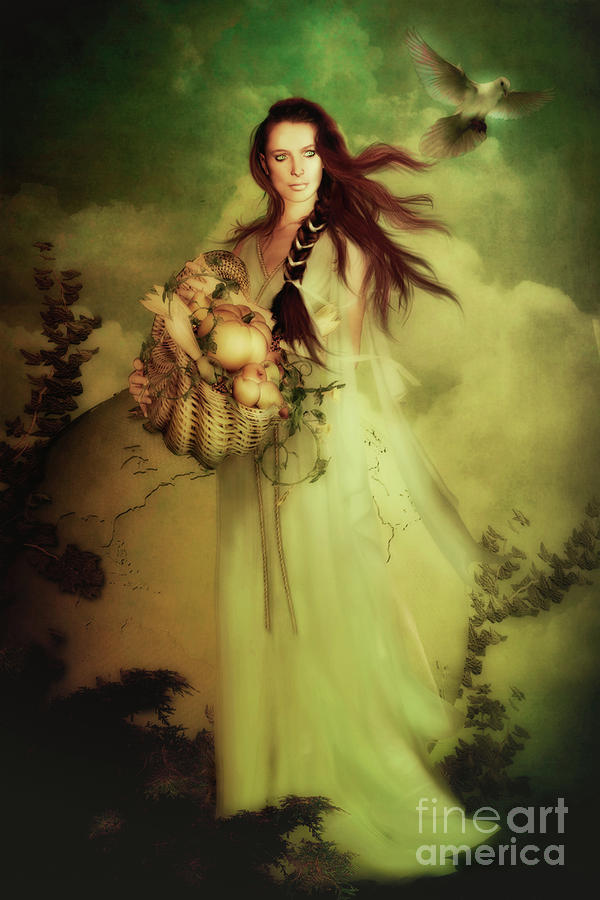
Demeter or Demetra (in ancient Greek Δημήτηρ or Δημητρα, 'mother goddess' or perhaps 'mother of distribution', perhaps of the Indo-European noun * dheghom * mater) is the Greek goddess of agriculture, pure nourishment of the green and young land, life cycle of life and death, and protector of marriage and sacred law. She is venerated as the "bearer of the seasons" in a Homeric hymn, a subtle sign that she was worshiped long before the arrival of the Olympians. The Homeric hymn to Demeter has been dated to the seventh century BC. C.3 Together with his daughter Persephone were the central characters of the Eleusinian mysteries that also preceded the Olympic pantheon.
TOP 30:
Eros, god erote of love
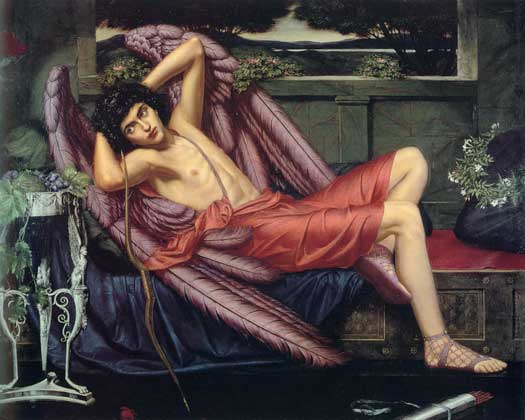
In Greek mythology, Eros (in ancient Greek Ἔρως) was the primordial god responsible for sexual attraction, love and sex, also revered as a god of fertility. In some myths he was the son of Aphrodite and Ares, but according to Plato's banquet it was conceived by Poros (abundance) and Penia (poverty) on Aphrodite's birthday. This explained the different aspects of love.
TOP 29:
Helio, god of the sun
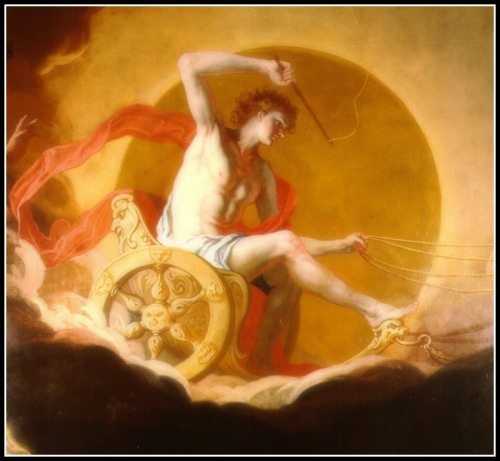
In Greek mythology, Helio or Helios (in ancient Greek Ἥλιος Hếlios, 'sun') is the personification of the Sun. and the Homeric hymn identify him with a son of the Titans Hyperion and Tea (Hesiod) or Eurifaesa (Homeric hymn) and Goddess brother Selene, the moon, and Eos, the dawn. However, Homer often calls it simply Titan or Hyperion.
TOP 28:
Hera, Olympic goddess of marriage
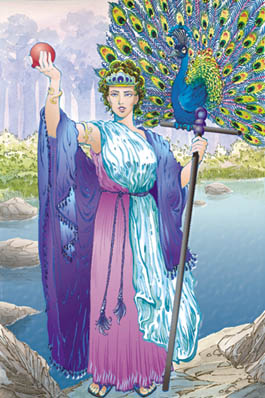
Hera (in ancient Greek Ἥρα Hēra, or equivalently: Ἥρη Hērē in Ionian and Homeric Greek) legitimate wife of Zeus and one of the three sisters of Zeus in the Olympic pantheon of classical Greek mythology. In addition, he held the position of Queen of the gods. Its equivalent in Roman mythology was Juno. He was sacrificed the cow and later the peacock. His mother was Rea and his father Crono.
TOP 27:
Persephone, goddess of spring
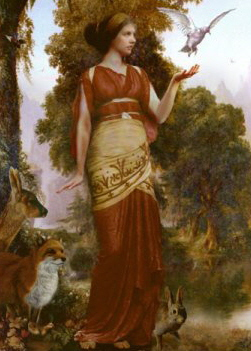
In Greek mythology, Persephone (in ancient Greek, Περσεφόνη Persephónē: 'the one who carries death') is the daughter of Zeus and Demeter (ἡ Μητὴρ hê Mêtềr: 'the mother'). The young maiden, named until then Kore (Κόρη: 'daughter'), is kidnapped by Hades and becomes the queen of the Underworld.
TOP 26:
Chaos, the emptiness
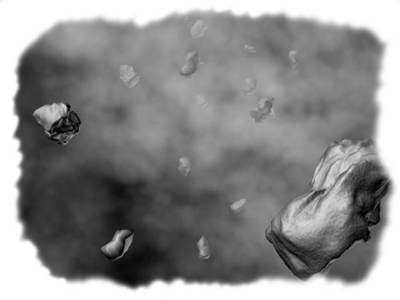
In some Greek cosmogonic stories, Chaos is what exists before the rest of the gods and elemental forces, that is, the primal state of the infinite cosmos. The term comes from the ancient Greek Χάος, 'space that opens', or 'cleft', and comes from the verb χἄω, which in derived forms means 'yawn', 'open a wound' or 'open a cave'. In the 5th century BC C. it was identified with the air, acquiring only belatedly the sense of "elementary confusion," with Ovid.
TOP 25:
Nemesis, daimónide goddess of revenge
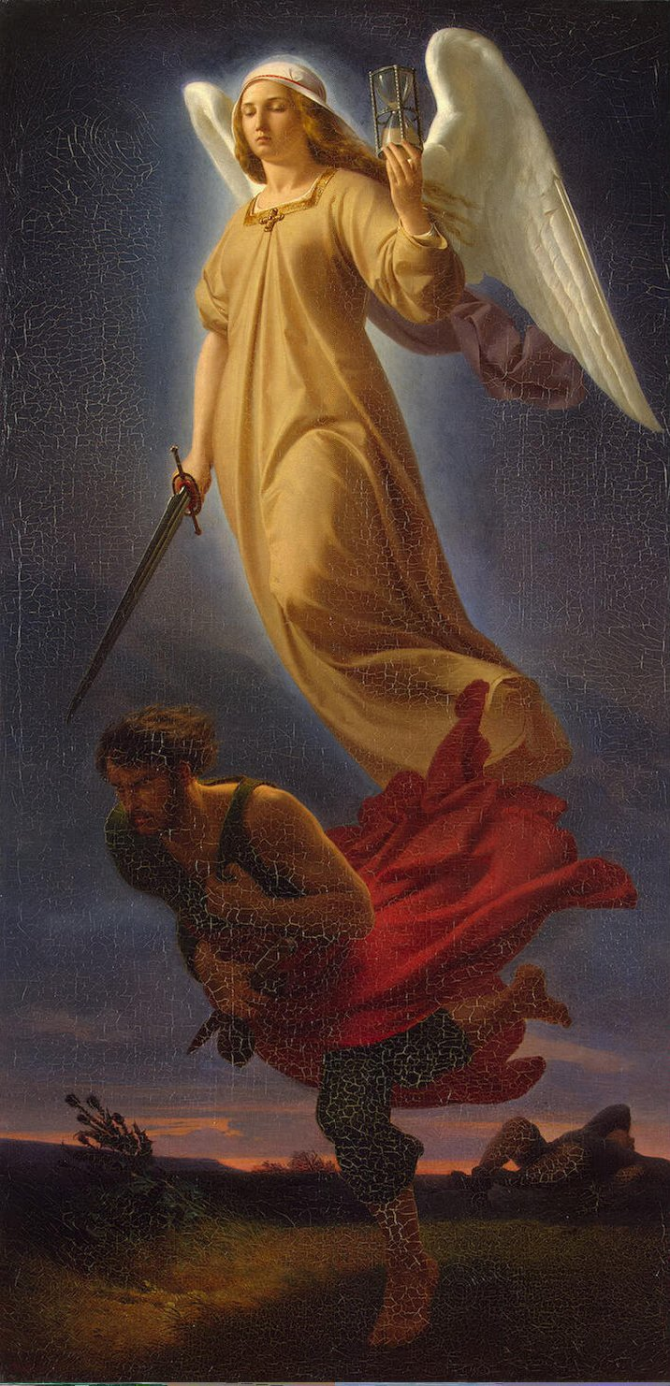
In Greek mythology, Nemesis (called Ramnusia, the 'goddess of Ramnonte' in her sanctuary in this city) is the goddess of retributive justice, solidarity, revenge, balance and fortune. He punished those who did not obey those people entitled to send them and, above all, children who did not obey their parents. He received the secret vows and oaths of his love and avenged unhappy or unfortunate lovers for the perjury or infidelity of his lover.
TOP 24:
Gea, the earth

Gea (from Latin Gæa) or Gaya alternately Ancient Greek Gaia: Γαῖα, Romanization: Gaĩa, pronunciation: classical: [ɡá͜ɪ̀a] Koiné: [ɟˈɛːa] Byzantine: [ʝˈea] from Ancient Greek Ge: Γῆ5, Romanization: Gễ, literally: « Earth »is the original goddess who personifies the Earth in Greek mythology. It is a primordial and ctonic deity in the ancient Greek pantheon, considered the Mother Earth, of which the oldest reference is the Mycenaean Greek ma-ka, written in linear syllabic alphabet B. Its equivalent in the Roman pantheon was Terra or Tellus Mater . The Romans, unlike the Greeks, did not systematically distinguish a Titan (Earth) from a goddess of grain, Ceres.
TOP 23:
Ocean, titan god of the oceans
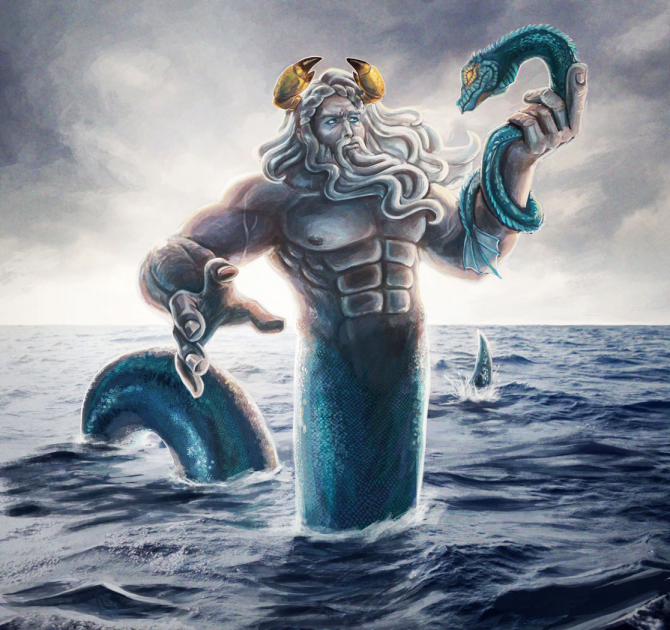
In classical antiquity, Ocean (in ancient Greek Ώκεανός Ōkeanós or Ωγενος Ōgenos, literally 'ocean'; in Latin Oceanus or Ogenus) referred to the World Ocean, which the Greeks and Romans thought was a huge river that surrounded the world. More precisely, it was the seawater stream of the equator in which the ecumenum floated (οἰκουμένη oikoumene).
TOP 22:
Ergía, daimónide goddess of laziness

In Greek mythology Ergy was a daimon daughter of Ether and Earth. He personified laziness and indolence, and lived, next to the stillness and silence, in the cave where Hipnos (the dream) slept. Its Roman equivalent would be Socordia, and its opposite daimon, Hormes, the effort.
TOP 21:
Hephaestus, Olympic god of metallurgy
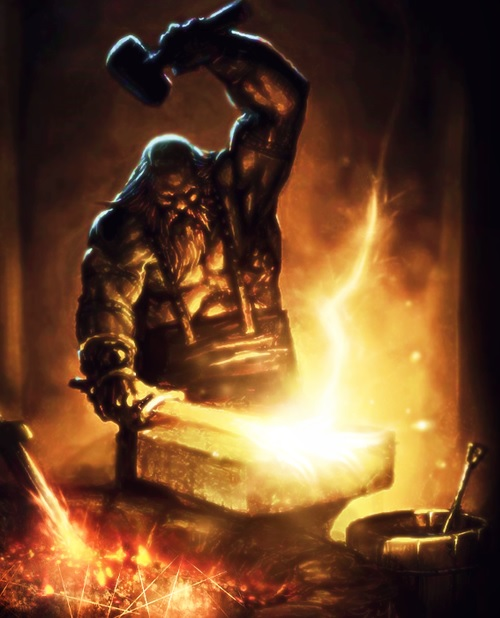
In Greek mythology, Hephaestus (in Greek Ἥφαιστος Hêphaistos, perhaps from φαίνω phainô, 'shine') is the god of fire and forge, as well as blacksmiths, craftsmen, sculptors, metals and metallurgy. He was worshiped in all the industrial and manufacturing centers of Greece, especially in Athens. Its approximate equivalent in Roman mythology was Vulcan, in the Japanese Kagutsuchi and in the Hindu Agni.
TOP 20:
Ganymede, erote god of homosexual love
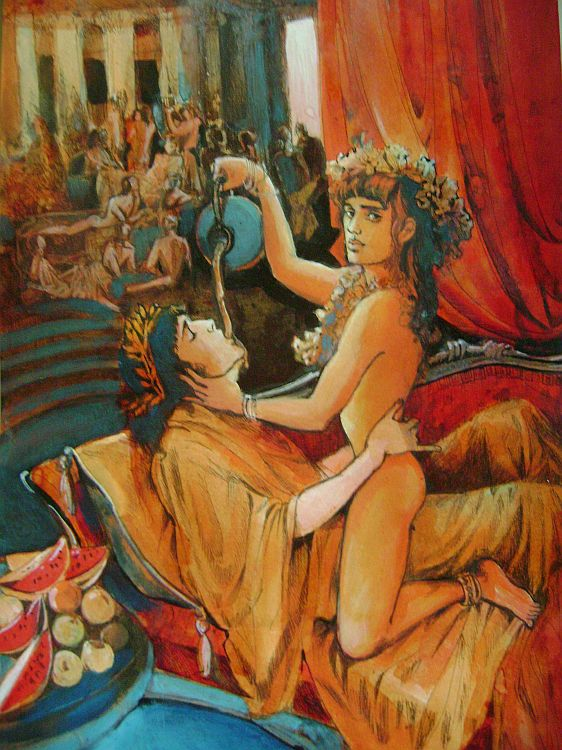
In Greek mythology, Ganymede (in Greek Γανυμήδης Ganymêdês) was a divine hero originally from the Tróade. Being a beautiful Trojan prince, son of the same eponymous Tros (or Laomedon, according to sources), Ganymede became the lover of Zeus and the cupbearer of the gods. On the etymology of his name, Robert Graves proposes in The Greek myths the following: "ganuesthai" + "medea" ("rejoicing in manhood").
TOP 19:
Themis, titanic goddess of justice
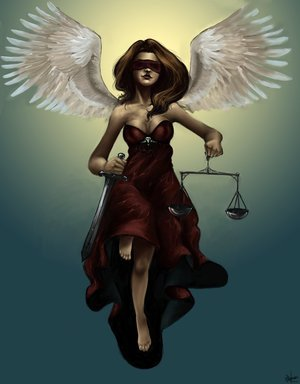
In Greek mythology, Themis (in Greek Θεμις Themis, which means 'law of nature' rather than 'human authority') is mentioned by Hesiod between the six brothers and the six sisters sons of Gea and Uranus. Among these Titans of the primordial myth, few were revered in specific sanctuaries in the classical era, and Themis was so old that the followers of Zeus claimed that it was with him who had the three Grim Reapers. A fragment of Pindar, however, tells that the Moiras were already present in the nuptials of Zeus and Themis, and that in fact they sprouted with Temis from the springs of the Ocean that surrounded the world, and accompanied him by the bright solar path to see Zeus on Olympus. With Zeus he conceived the Hours, Eunomia, Dice and Irene. Themis was present in Delos as a witness of the birth of Apollo.
TOP 18:
Hermes, Olympic god of the messengers
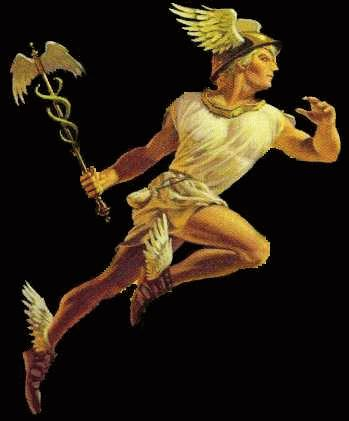
In Greek mythology Hermes (in ancient Greek Έρμῆς) is the Olympic messenger god, of the borders and the travelers who cross them, of the shepherds, of the speakers, the ingenuity and of the commerce in general, of the cunning of the thieves and the liars. In Roman mythology it was called Mercury. Son of Zeus and the Pleiade Maya. The Homeric hymn to Hermes invokes him as the «of multiform ingenuity (polytropos), of cunning thoughts, thief, oxen, chief of dreams, night spy, guardian of the doors, who would soon flaunt glorious feats before the immortal gods ». Hermes is also the protagonist of many myths, such as that of Philemon and Baucis.
TOP 17:
Rhea, titanic goddess of motherhood
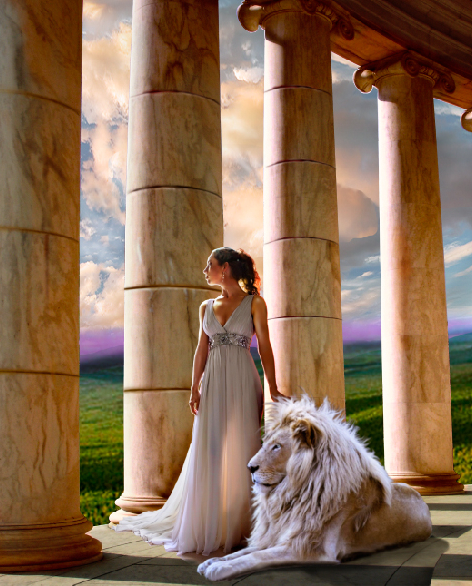
In Greek mythology, the Titan Titan (in ancient Greek Ῥεία Reia, Ῥέα Rea, Ῥείη Reiē or Ῥέη Reē, 'flow [menstrual or amniotic fluid]' or 'ease [in childbirth]') was the daughter of Uranus and Gea , sister and wife of Cronus, and mother with this one of Demeter, Hades, Hera, Hestia, Poseidon and Zeus. It was strongly associated with Cibeles, so much so that in works of art it used to be represented in a car pulled by two lions, and it was not always possible to distinguish them. In Roman mythology, it was the Magna Mater deorum Idaea and was identified with Ops. According to Hesiod, she was the nurse of Dionysus. In the Palatine Anthology it is mentioned as a nurse of lions and lions.
TOP 16:
Iris, goddess of the rainbow
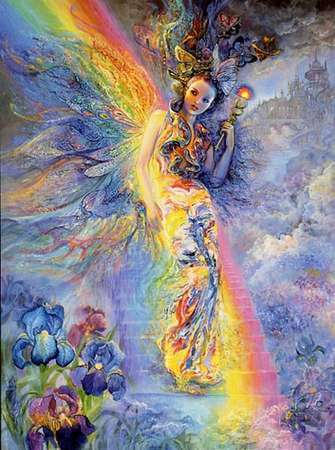
In Greek mythology, Iris (in Greek Ἶρις, 'rainbow') is the daughter of Taumante and the oceanic Electra and sister of the Harpies. In the Iliad, she is described as messenger of the gods; however, in the Odyssey this paper is reserved for Hermes. Iris is the personification of the rainbow that announces the pact of humans and gods and the end of the storm; Like Hermes, she is in charge of sending the messages of the gods to human beings. She is married to Zephyr, god of the west wind.
TOP 15:
Hipno, god daimón of the dream
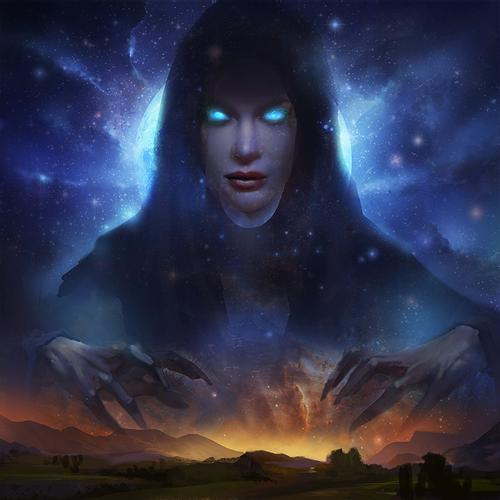
In Greek mythology, Hipno (ancient Greek: Ὕπνος, Romanization: Hýpnos, literally: "dream, drowsiness") or Hipnos was the personification of the dream. His mother was Nix, the night, who had him without male intervention, although in some other tradition his father was Érebo. He was a twin of Thanatos (death without violence). The Roman equivalent of Hipnos was Somnus.
TOP 14:
Selene, goddess of the moon
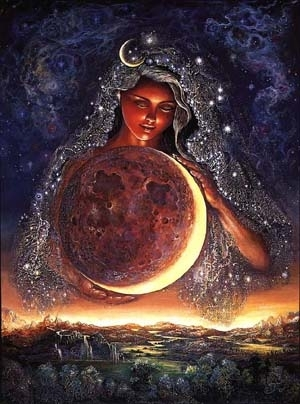
In Greek mythology, Selene (in ancient Greek, Σελήνη Selếnê) was an ancient lunar goddess daughter of the Titans Hyperion and Tea. Its equivalent in Roman mythology was the goddess Luna. The moon goddess is invariably a leading role. If his name is Greek, he is connected with signs, "light." Selene ended up being largely supplanted by Artemis, so that later writers described her as a daughter of Zeus or Palas. In the Homeric hymn to Hermes, with his characteristically insistent patrilineality, he is the "brilliant Selene, daughter of Palas, son of Megamedes." In traditional divine genealogy, Helios, the sun, is his brother: after he finishes his journey through the sky, Selene begins his when night falls on the earth. His sister Eos is the goddess of the dawn, who also had a human lover, Cephalus.
TOP 13:
Ceo, titan god of intelligence
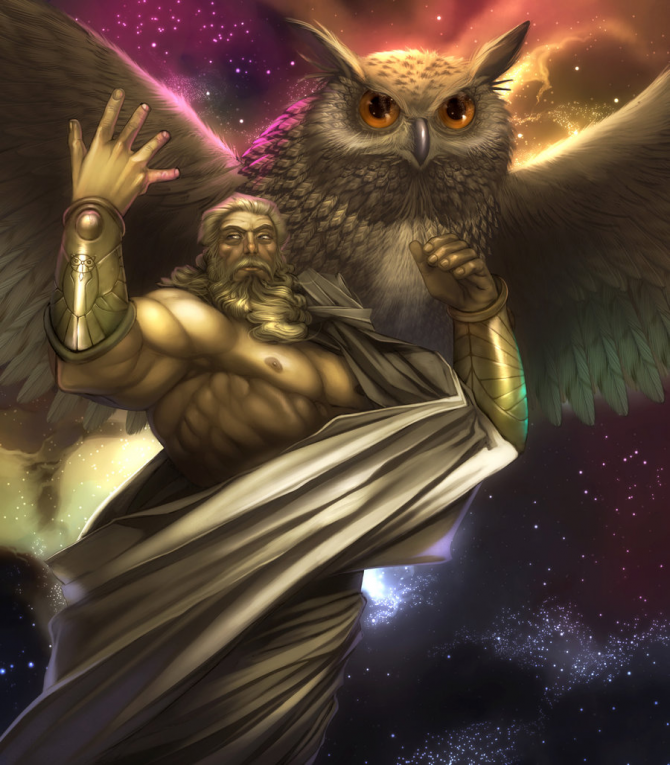
In Greek mythology, Ceo (in ancient Greek Κοῖος Koĩos, 'intelligence', 'inquisitiveness') was the Titan of intelligence. The Titans were the giant sons of Uranus (Heaven) and Gea (Earth).
TOP 12:
Tanato, god daimón of the death
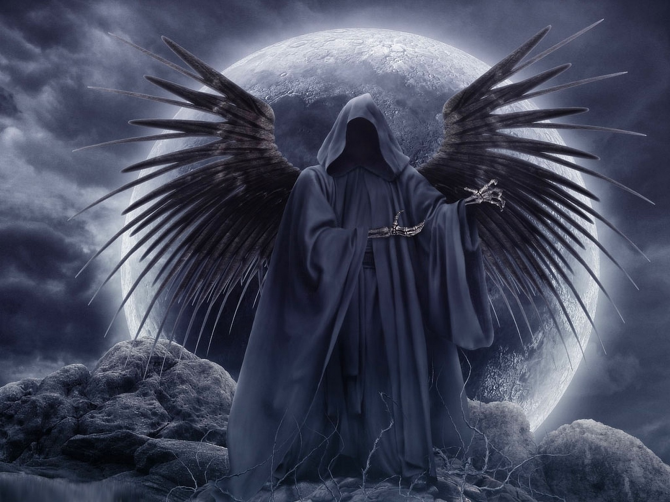
In Greek mythology, Tanato or Thanatos (in ancient Greek Θάνατος Thanatos, 'death') was the personification of death without violence. His touch was soft, like that of his twin Hipnos, the dream. Violent death was the domain of his blood-loving sisters: the Keres, regulars of the battlefield. Its equivalent in Roman mythology was Mors or Letus / Letum.
TOP 11:
Thetis, titanic goddess of the seas
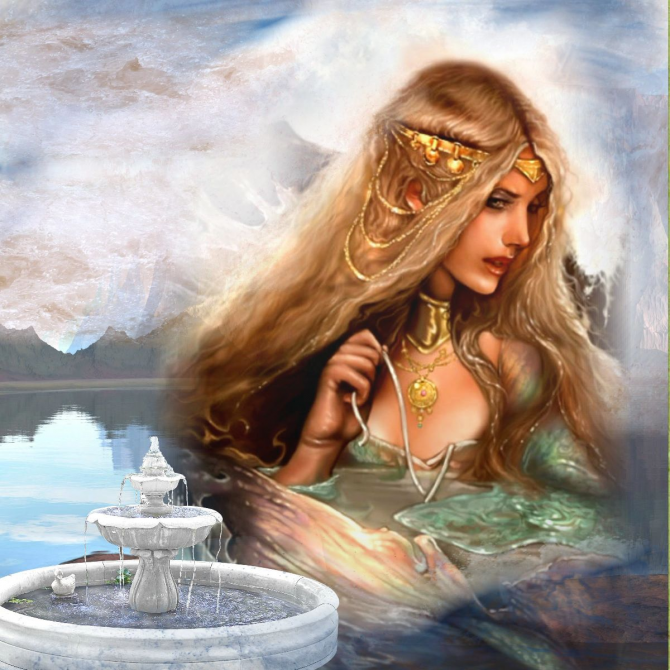
In Greek mythology, Thetis (in ancient Greek Τηθύς Têthys, 'nanny', 'grandmother' or 'aunt'), daughter of Uranus and Gea, is a titanian and goddess of the sea, at the same time sister and wife of Ocean. She was mother of the main rivers (oceánidas) of the world known by the Greeks, like the Nile, the Alfeo, the Meander, and of about three thousand daughters called the oceánides. Considered a personification of the waters of the world, it can also be seen as equivalent to Thalassa, the personification of the sea.
TOP 10:
Ares, Olympic god of war
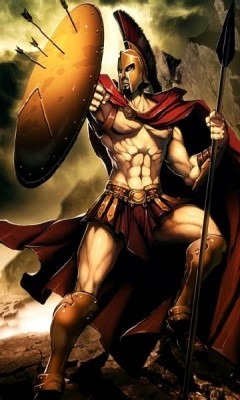
In Greek mythology, Ares (in ancient Greek Ἄρης) is considered the Olympic god of war, although it is rather the personification of brutality and violence, as well as the tumult, confusion and horrors of battles, as opposed to his Stepsister Athena, who represents meditation and wisdom in the affairs of war and protects humans from their ravages. The Romans identified him with Mars, the Roman god of war and agriculture (whom they had inherited from the Etruscans), but he enjoyed much greater esteem among them.
TOP 9:
Nyx, the night
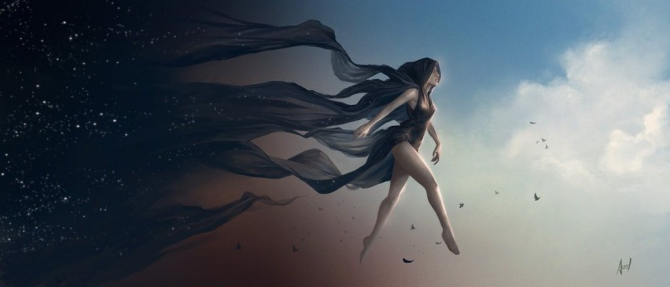
In Greek mythology, Nix, Nyx or simply Night (in ancient Greek, Νύξ) was the primordial goddess of the night. It is also called Nicte, and in Roman texts dealing with this Greek theme, its name is translated as Nox.
TOP 8:
Apollo, Olympic god of the arts
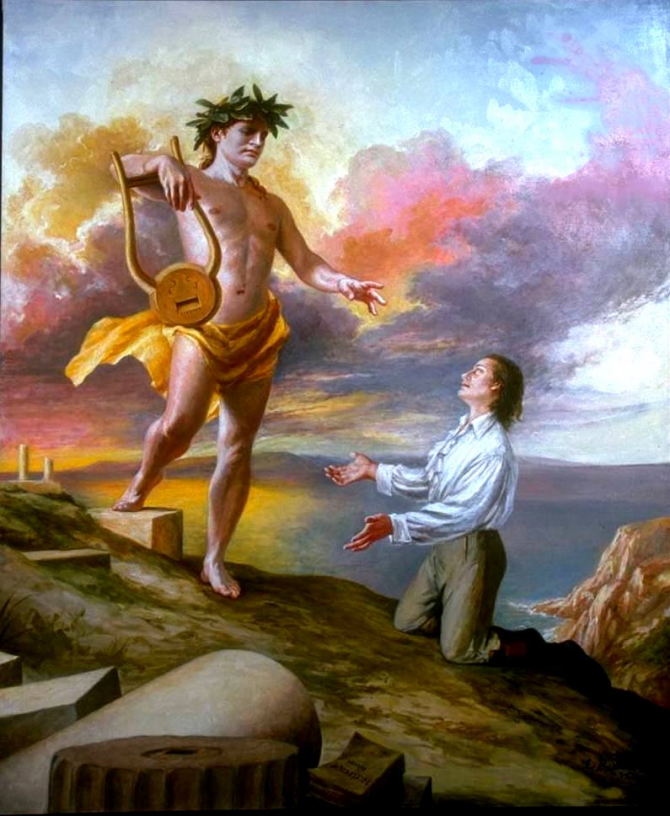
Apollo (in Greek: Ἀπόλλων, transl. Apóllōn, or Ἀπέλλων, transl. Apellōn) was one of the main divinities of Greco-Roman mythology, one of the Olympic gods. He was the son of Zeus and Leto and twin brother of Artemis, possessed many attributes and functions and possibly after Zeus was the most influential and revered god of all those of classical antiquity. The origins of his myth are obscure, but in Homer's time it was already of great importance, being one of the most cited in the Iliad. He was described as the god of divine distance, who threatened or protected from above the heavens, being identified with the sun and the light of truth. He made men aware of their sins and was the agent of their purification; presided over the laws of religion and the constitutions of cities, was a symbol of prophetic and artistic inspiration, being the patron of the most famous oracle of Antiquity, the oracle of Delphi, and leader of the muses. He was feared by the other gods and only his father and mother could contain him. He was the god of sudden death, of plagues and diseases, but also the god of healing and protection against evil forces. In addition, he was the god of beauty, perfection, harmony, balance and reason, the initiator of young people in the world of adults, was connected to nature, herbs and herds, and He was protector of the shepherds, sailors and archers. Although he had many loves, he was also unhappy in that field, but had several children. He was depicted countless times since ancient times, generally as a young man, naked and without a beard, in the fullness of his vigor, sometimes with a mantle, a bow and a quiver of arrows, or a lyre, created for him by Hermes, and with some of its symbolic animals like the snake, the raven or the tap.
TOP 7:
Artemis, Olympic goddess of the hunt
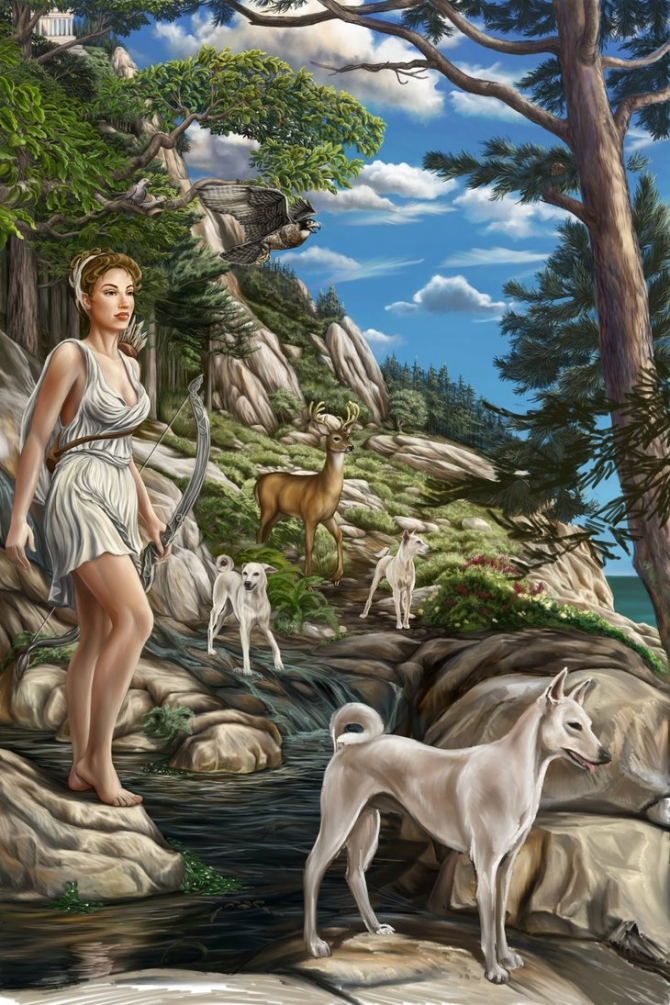
In Greek mythology, Artemis or Artemis (in ancient Greek Ἄρτεμις —nominative— or Ἀρτέμιδος —genitive—) was one of the most widely revered deities and one of the oldest. Some researchers believe that her name, and in fact the goddess herself, was originally a questioner. Homer refers to her as Artemis Agrotera, Potnia Theron, 'Artemis of the virgin land, Lady of the Animals'. In the classical period of Greek mythology, Artemis was often described as the daughter of Zeus and Leto, and the twin sister of Apollo. It was the goddess Helena of the hunt, the wild animals, the virgin land, the births, the virginity and the maidens, that brought and alleviated the diseases of the women. She was often depicted as a hunter carrying a bow and arrows. The deer and the cypress were consecrated.
TOP 6:
Erebo, the darkness
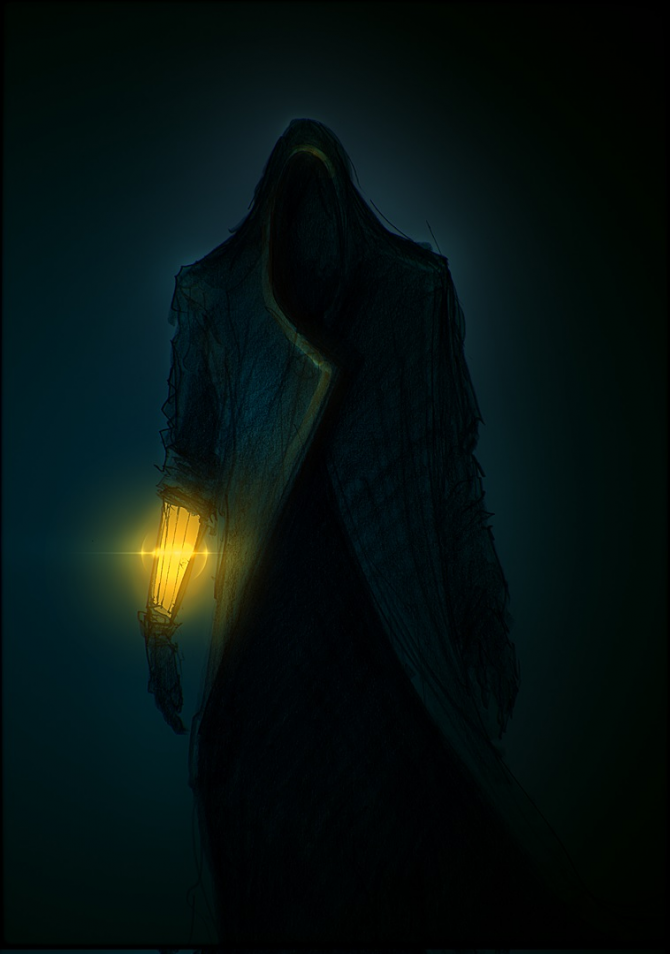
In Greek mythology, Érebo (in ancient Greek Ἔρεϐος Érebos, 'darkness', 'blackness' or 'shadow'; in Latin Erebus) was a primordial god, personification of darkness and shadow, which filled all corners and holes of the world. It was also called Skotos (Σκοτος). It was said that its dense fogs of darkness surrounded the edges of the world and filled the dark underground places. He was a descendant of Chaos alone, brother of Nix and father with this one of Ether and Hemera.
TOP 5:
Zeus, Olympic god of heaven
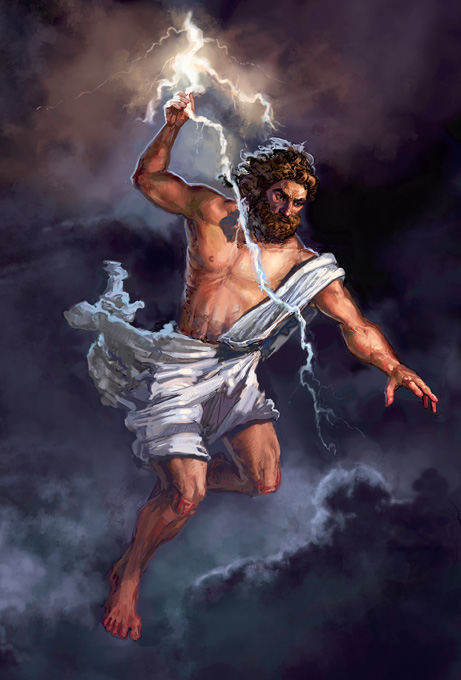
In Greek mythology Zeus (in ancient Greek Ζεύς Zeús) is the "father of the gods and men," who ruled the gods of Mount Olympus as a father to a family, so that even those who were not their natural children they addressed him as such. He was the "King of the gods" who oversaw the universe. He was the god of sky and thunder. Its attributes include lightning, eagle, bull and oak. In addition to its Indo-European heritage, the classic Zeus "cloud collector" also obtained certain iconographic features of cultures of the ancient Near East, such as the scepter. Zeus was frequently represented by Greek artists in two poses: standing, advancing with a beam raised in his right hand, and sitting majestically.
TOP 4:
Aphrodite, Olympic goddess of beauty
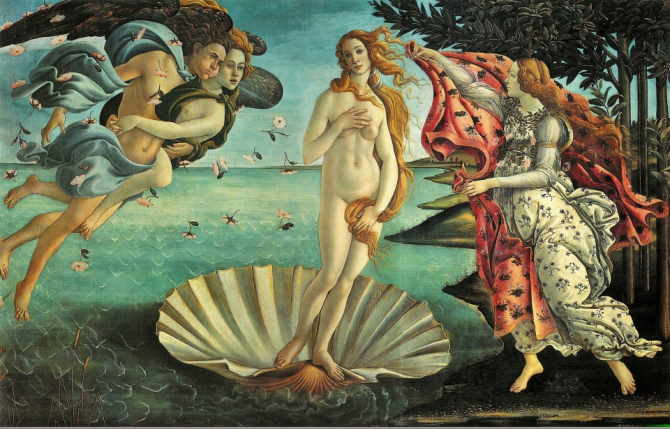
Aphrodite (in ancient Greek, Ἀφροδίτη) is, in Greek mythology, the goddess of lust, beauty, sexuality and reproduction. Although it is often referred to in modern culture as "the goddess of love," it is important to note that it was not normally love in the Christian or romantic sense, but specifically Eros (physical or sexual attraction). Its Roman equivalent is the goddess Venus.
TOP 3:
Hades, olympic god of the underworld
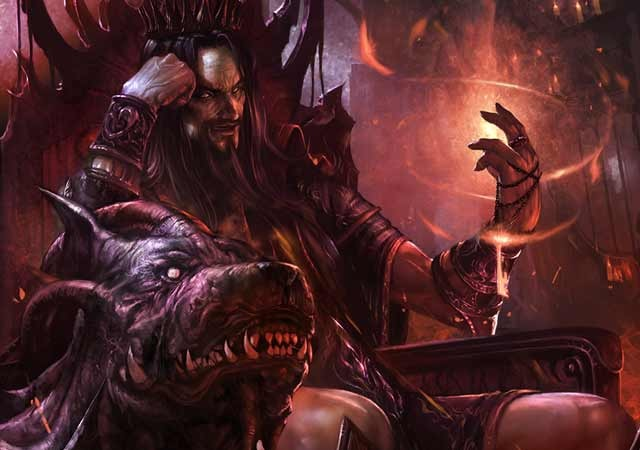
In Greek mythology Hades (in ancient Greek ᾍδης Hadēs, originally Ἅιδης Haidēs or Ἀΐδης Aïdēs - Doric Ἀΐδας Aidas—, 'the invisible') 1 refers to both the ancient Greek underworld and the god of the latter. The word referred in Homer only to God; being the genitive ᾍιδού Haidou an elision to designate location: 'the house / domain of Hades'. Finally also the nominative came to designate the abode of the dead.
TOP 2:
Poseidon, olympic god of the sea
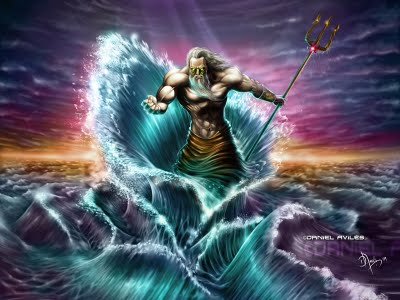
Posidon or Poseidon (ancient Greek: Ποσειδῶν, Romanization: Poseidỗn, pronunciation: classical: poseːdɔ́ː̀n, Koiné: po̞siːdˈo̞ːn, Byzantine: posiðˈon) is the god of the sea, storms and, as "Earth Agitator", of earthquakes in the Greek mythology. The name of the Etruscan sea god Nethuns was adopted in Latin for Neptune (Neptunus) in Roman mythology, both sea gods being analogous to Poseidon. The tablets in linear B show that Poseidon was revered in Pilos and Thebes in the Mycenaean Greece of the late Bronze Age, but was integrated into the later Olympic pantheon as the brother of Zeus and Hades. Poseidon had many children and was protector of many Hellenic cities, although he lost the contest for Athens against Athena. He was dedicated a Homeric hymn.
TOP 1:
Athena, Olympic goddess of wisdom
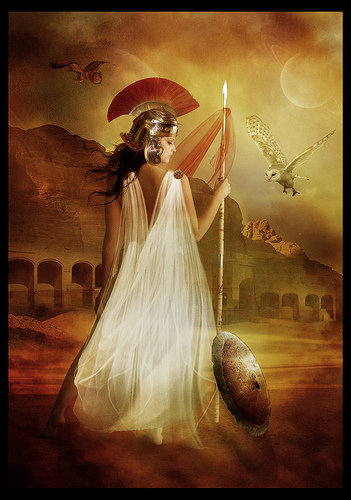
In Greek mythology, Athena or Athena1 2 3 (from the attic Greek Ἀθήνη; transl., Athēnē or Ἀθηναίη, Athēnaiē), also known as Pallas Athena (Παλλὰς Ἀθήνη) is the goddess of war, civilization, wisdom, strategy, of the arts, justice and skill. One of the main divinities of the Greek pantheon and one of the twelve Olympic gods, Athena received worship throughout Ancient Greece and throughout its area of influence, from the Greek colonies of Asia Minor to those of the Iberian Peninsula and North Africa . Its presence is attested even in the vicinity of India. Therefore, his cult took many forms and even had a considerable extension to the point that his figure was syncretized with other divinities in the regions surrounding the Mediterranean.

